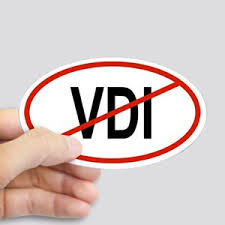As cloud-based solutions and user mobility become more mainstream, there’s a lot of buzz surrounding virtual desktop infrastructure (VDI) environments like Citrix and Desktop as a Service (DaaS) products like VMware and Windows Virtual Desktop. And for some organizations that are looking to deliver virtual desktops to their end users, large-scale VDI or DaaS products like these may make sense.
 For many organizations, however, VDI and DaaS create an entirely new subset of IT infrastructure that has to be licensed, administered and maintained. This can rapidly become expensive and hugely resource intensive.
For many organizations, however, VDI and DaaS create an entirely new subset of IT infrastructure that has to be licensed, administered and maintained. This can rapidly become expensive and hugely resource intensive.
Even supposedly low-footprint, cloud-centric solutions like Windows Virtual Desktop, or WVD, can offset their promised savings through “services creep” — that is, all the add-ons and subscriptions that are recommended if you want decent performance and security.
The Virtualization Dilemma and the App Gap
All these added costs and extra moving parts don’t make a lot of sense if your organization is looking for straightforward virtual application delivery and streamlined infrastructure. At the same time, VDI and DaaS products are often treated like the default—or even the only—way to ensure consistent and near-universal access to specific applications.
That dilemma leaves a lot of organizations standing on the precipice of the App Gap. They want to provide their end users with seamless application virtualization but don’t want to commit to the massive investment of a VDI or DaaS solution.
In the end, those organizations are either left stuck in the same year as their legacy software, or they take the plunge and suffer through the lost productivity from not having access to vital apps. Neither is a desirable scenario.
The Complexity of Virtual Desktop Infrastructure
It would take a long and detailed book to tease out all the possible permutations of a given VDI or DaaS solution. Part of that is because implementing virtual desktop infrastructure or DaaS depends heavily on the types of virtual apps and desktops that an organization intends to deliver.
Generally speaking, setting up a Citrix, VMware or WVD environment will involve allocating virtual machine (VM) resources, adding feature packages, configuring authentication or access mechanisms as well as choosing between various licensing tiers that aren’t always matched to every use case.
The sheer number of variables serves to underscore the main argument against implementing VDI or DaaS as a way to preserve legacy apps: Frankly, it’s overkill if all you’re after is virtual application delivery. Each component adds another layer of complexity, and each layer of complexity adds another expense. And we’re not just talking about the costs of hosting, data or services. Administration costs can add up quickly too.
Closing the App Gap with Cameyo
To virtualize legacy software without the initial (and ongoing) resource vortex of VDI solutions, there’s Cameyo. Our virtual application delivery platform is a cloud-optimized, cost-effective way to retain your organization’s critical legacy apps and make them available to end users across devices.
Unlike VDI solutions, Cameyo deploys and operates seamlessly in any environment. You can choose to host your Cameyo instance yourself in the cloud, on-prem or even as a hybrid solution, or you can choose to have us fully host it for you. And to access and use your apps, all it takes is an HTML5 browser. There’s no costly and time-consuming redevelopment period, no platform restrictions for your end users, and no sacrifice when it comes to the performance or features of your legacy applications.
That’s why organizations like Aptean, a leading global provider of mission-critical enterprise software solutions, opted for Cameyo’s virtual delivery (read the full case study here). Aptean didn’t just close the App Gap and enable its customers’ continued success. Through Cameyo, the company also saw increased security, better performance, greater ease of use and additional cost savings. Those same advantages are what make Cameyo an ideal Citrix alternative.
Your organization can close the App Gap too — and without having to sink time, money and energy into deploying or augmenting VDI or DaaS. Get started with a free, full-featured trial of Cameyo to experience how simple, powerful and cost-effective application virtualization can be.
